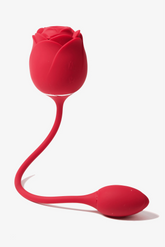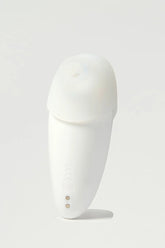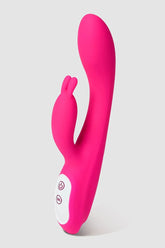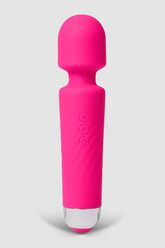Female Orgasm Disorder: Why It Happens and How to Heal
Some women climax easily. Others struggle for years, wondering why pleasure feels just out of reach.
It’s not rare, and it’s not a failure. It’s something many women quietly live with.
Doctors call it female orgasm disorder, or anorgasmia—a condition where orgasm is delayed, weak, or doesn’t happen at all, even when desire and arousal are there. It can be medical, emotional, or both. And most importantly, it can be treated.
What “Female Orgasm Disorder” Really Means
The Mayo Clinic (2024) describes it simply: a type of sexual dysfunction where a woman finds orgasm difficult, less intense, or absent.
(Source: Mayo Clinic – Anorgasmia)
There are a few ways professionals categorize it, though real life isn’t always that tidy:
- Primary anorgasmia: orgasm has never happened.
- Secondary: it used to happen, but not anymore.
- Situational: orgasm happens alone but not with a partner—or the other way around.
- Generalized: nothing seems to work, in any context.
Those terms sound clinical, but what they really describe is frustration, self-doubt, and sometimes grief. When pleasure doesn’t come, it touches far more than the body.
How Common Is It?
More common than you might guess. Studies suggest around 10–15% of women experience ongoing orgasm difficulty, and nearly a third face it temporarily at some point.
Stress, medication, relationship strain—all can play a role.
So if you’ve ever felt “different,” you’re not. You’re just human, and your body’s asking for attention rather than blame.
Physical Reasons That Might Interfere
The body is intricate. A few small shifts—hormones, nerves, medication—can change everything.
Neurological factors are one example. Conditions like multiple sclerosis or spinal cord injury can dull signals between the genitals and the brain. The Cleveland Clinic explains that these interrupted pathways often reduce sensitivity and slow down response.
(Source: Cleveland Clinic – Anorgasmia)
Hormonal changes after childbirth or during menopause lower estrogen. Less estrogen means less blood flow and lubrication, which can make stimulation harder to enjoy.
Medications, particularly SSRIs (a common class of antidepressants), may block the neurotransmitters linked to orgasm. If you suspect this, don’t stop cold turkey—speak to your doctor. Sometimes a simple adjustment makes a big difference.
Chronic conditions like diabetes, thyroid imbalance, or long-term pelvic pain can also interfere. And when sex starts to hurt, the body learns to tense up instead of relax—a natural defense, but one that kills arousal.
When the Mind Gets in the Way
For many women, the brain—not the body—is the bigger barrier.
Anxiety, stress, past trauma, even guilt can interrupt the moment. If your mind is busy managing fear or self-criticism, it can’t surrender to pleasure.
Think of it like trying to relax while holding your breath.
Relationship tension makes it worse. A lack of communication or emotional distance turns sex into pressure instead of play.
And then there’s culture. Many women grow up hearing that pleasure is shameful or “too much.” When you’ve been told that long enough, it’s hard to flip that switch later.
MedlinePlus (2024) highlights that learning about your own anatomy and pleasure response is part of healing, not indulgence.
(Source: MedlinePlus – Female Orgasmic Disorder)
How It Shows Up
Orgasmic dysfunction doesn’t look the same for everyone.
Sometimes it’s taking a long time to climax. Sometimes the orgasm feels weak or distant. Sometimes arousal fades halfway through.
You might feel physically fine but emotionally detached—or frustrated that you can’t reach the peak even when everything else feels right.
The signs can come and go. But if it keeps repeating, it’s worth paying attention.
The Importance of Arousal
Orgasm is a chain reaction. The body needs to feel safe, the mind has to stay engaged, and physical touch has to sync with both.
Break one link, and the rest struggles.
That’s why therapists often guide clients back to basics: breathing, mindfulness, and slow, non-goal-oriented touch.
When you stop chasing orgasm and start noticing sensation, your body begins to respond again—naturally.
Modern Treatment Approaches
There isn’t one magic fix, but there are many paths that work.
Medical checkups first.
A gynecologist or sexual health specialist can rule out hormonal shifts, nerve problems, or medication side effects.
If antidepressants are the cause, doctors can often adjust the dose or switch to alternatives.
Sex therapy next.
Trained therapists help individuals and couples rebuild confidence and connection. The Mayo Clinic notes that therapy often includes guided anatomy education and exercises to reduce anxiety and restore pleasure.
Touch retraining.
“Sensate focus” techniques teach couples to explore touch without the goal of orgasm. It’s simple but effective—pleasure without pressure rewires the brain’s reward system.
Mindfulness and relaxation.
Yoga, breathing, and meditation lower cortisol and increase body awareness. When the nervous system calms down, arousal flows more freely.
Smart use of stimulation devices.
Sometimes the right tools—vibrators, wand massagers, clitoral stimulators—help reintroduce sensation. Used gently with water-based lube, they increase blood flow and retrain responsiveness.
Still, Healthline (2024) warns against overdoing it. Too much intense vibration can dull the nerves temporarily. It’s about exploration, not endurance.
The Emotional Side of Recovery
Physical fixes help, but emotional healing seals the change.
Therapists often encourage journaling, honest talks with a partner, or solo exploration without guilt.
Pleasure grows in spaces where pressure disappears.
If you’re in a relationship, honesty matters more than perfection. Telling your partner “this isn’t about you, it’s about me learning my body again” keeps connection alive. Many couples find that working through it actually makes intimacy deeper.
Learning and Relearning
Education is power.
The more you know about anatomy and sexual health, the less intimidating this becomes.
Resources from Mayo Clinic and Cleveland Clinic are great starting points. Workshops and online classes can also help, especially those focused on women’s pleasure and body awareness.
When we talk openly about orgasm, it stops being taboo—and starts being part of normal wellness.
When to Seek Help
Don’t wait until frustration turns into avoidance.
If orgasm feels impossible, if sensitivity changed after childbirth or medication, or if emotional stress lingers—see a healthcare provider.
A proper evaluation can separate physical causes from psychological ones and lead you to targeted treatment. It’s a relief to finally have language for what’s happening.
A Realistic Kind of Hope
Female orgasm disorder doesn’t mean something is “broken.” It means the body’s signals need time and attention.
The journey might include therapy, communication, or even a vibrator—but mostly, it’s about patience.
Over time, the body relearns what pleasure feels like. And when it does, the experience often feels more grounded, more emotional, more whole.
Pleasure isn’t luck or magic. It’s part of health.
And health—just like desire—deserves care.
Explore: our step-by-step guide to rebuilding confidence and restoring female sexual wellness.





















